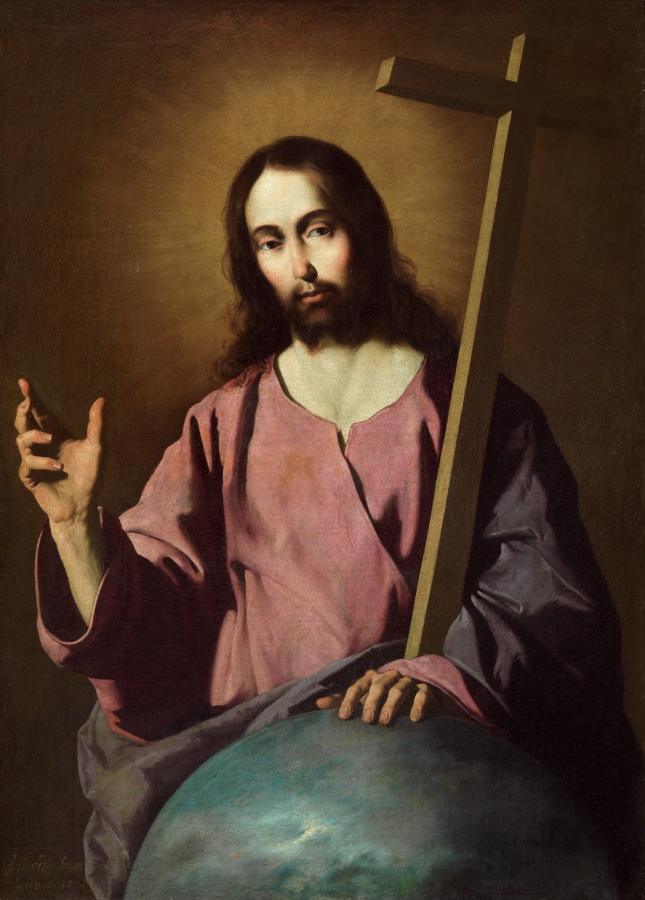Zurbarán, Francisco de (1598-1664)
El Salvador bendiciendo (The Saviour in Blessing)
1638
Oil on canvas, 100 x 72 cm
Museo del Prado, Madrid
This is the only example known to have been painted by Zurbarán of the medieval iconography of Jesus as savior, making this canvas especially interesting to historians of art. Similar examples had decorated the title pages of New Testaments in early illustrated Bibles from the Middle Ages through the sixteenth century, but were rare by the time Zurbarán painted his version of the same subject. The most direct precedent is a Flemish print by the Wierix brothers, to which Zurbarán must have had access. (Religious prints by these Flemish artists were very popular in Spain, and were collected, and often used as models, by painters.) Taking that composition as point of departure, Zurbarán chose to enlarge the motifs of the globe and the cross, perhaps in order to emphasize the painting’s theological and doctrinal content.
Depictions of Jesus blessing with his right hand while holding an orb topped with a cross with the left are clearly symbolic, not matching any particular moment in the narrative of the Gospels. The orb stands for the universe, while the cross alludes to the Christian idea of redemption; therefore, the iconography visually represents the roles of Jesus as ruler and savior of humanity. At the same time, this iconography may have had a Eucharistic connotation, given that although perhaps not evident at first glance to us today, the position of Jesus’ hands would have reminded Zurbarán’s contemporaries of the gestures that priests celebrating Mass made during the Consecration, the same attitude in which Jesus is often depicted in representations of the Last Supper.
Although the iconography is relatively unusual, the depiction of Jesus follows highly conservative conventions. He is shown as a young adult, dressed in a red tunic (the coat without seam mentioned in John 19:23) and blue mantle. There is an interesting contrast between Jesus’ hands and face: the fingernails and skin, somewhat weathered, have a natural, lifelike appearance, as though they had been observed from life, while the face and neck have an idealized, formulaic beauty and are painted in much paler tones.
The beard and hair (which Zurbarán has painted with great care) and the facial features derive from Byzantine icons as well as from relics such as the shrouds kept in the cathedrals of Oviedo and Jaén, among others, which were said to be direct imprints of Jesus’ true likeness and therefore treated with great respect by painters. As is usual in Zurbarán, a strong directed light brings into sharp focus the precisely-drawn contours of shapes and their plain, pale colors and casts strong shadows over them. The background of the painting consists of a dark, empty space, so that the viewer is presented with no distractions. This strategy helps concentrate the viewer’s gaze on the figure, while at the same time the golden glow around Jesus’ head accentuates the supernatural character of the representation and makes the experience of looking at it more akin to a vision than the contemplation of a painting. For all these reasons, this painting would have been appropriate for an individual’s private contemplation, or for similar use in a monastic setting. This type of meditation, in which the devout man or woman concentrated on a painted image as a visual aid that might help stimulate an emotional response, was one of the many ways in which Spaniards of the seventeenth century interacted with religious images (Pérez d´Ors, P.: El Greco to Goya. Masterpieces from the Prado Museum, Museo de Arte de Ponce, 2012, pp. 116-117).
